Web Presence In Branding
(for previous installments on branding for small business check them out here: Part 1, Part 2, Part 3)
HOW DO YOU WANT TO BE FOUND?
Generations of businesses had to build their brands on television and movie screens, radio, magazines and newspapers. Newer generations will do the same online but at a much lower cost with no need for a gatekeeper’s approval. They no longer need to worry about large TV or Radio budgets to get their message out there.
Reaching customers used to be a big company’s game until recently. Running ads in major media came with very high costs making it the domain of only those with substantial resources. So without size you didn’t have sufficient funds, without funds your message was left unheard.
In today’s world, favor and connections with emerging social media venues can’t be influenced by large corporations as easily. This makes for an unprecedented opportunity for small companies. It still might not be easy to share your message, but if it’s a really good one and you play your cards right, you can establish connections that are elusive to most brands.
Traditional advertising can still be important but it only goes so far. You can create an online ecosystem where people come to you, your website or your social media pages willingly. Not just being directed to those pages because of an ad campaign. Give them a reason to be there and the traffic will continue to flow long after your ad campaigns stop.
Are you using the right tools?
There are amazing tools out there and new ones coming up every day. Most of these, you’ve heard about for a while. Services like Facebook offer huge opportunities for businesses if they play their cards right. Twitter, youtube, Pinterest, flickr and LinkedIn are all major social media outlets that you can leverage as well. They might not all be right for you though. For example, a local craftsperson can find incredible success with Pinterest but it’s hardly the right match for a manufacturing company. Do your research and find the channels that suite your voice best. Then work at it! Focus on the quality of your follows and not necessarily the quantity…
Go where your clients are. For example, Twitter is great but do your customers even use it? I personally use twitter but it’s been more useful to connect with industry peers than prospective clients it may not result in an immediate sale but it shows people my personality. That’s not to say that Twitter can’t work for your business: There’s the story of the Vancouver Man who lost his job last year. He started renting a Hot Dog Stand, in his fourth-ever Twitter update he sent a message where and when he was going to be and people started retweeting it. Before he knew it he had people from all over the area getting Hot Dogs from him. It’s only a small example about how you need to think Creatively to use social media best. So maybe not everyone in your target market uses Twitter but on the other hand almost EVERYONE is on facebook, heck my grandma is on facebook. Does she use it the same as everyone else? Not necessarily, but what it boils down to is just another medium to reach people and interact with them.
Facebook is a tool for getting your brand to others and it should reinforce the brand. Not be a replacement for the brand itself.
Social media can be an incredible tool to increase awareness about your business but it’s not mystical or magical. Social media is like word of mouth on steroids. You meet people, use a product or service and then recommend them. It’s just like normal networking only broader, easier and able to reach more people. Social media sites like Facebook are not a silver bullet for marketing and like anything there are benefits and risks. If people are commenting on your page and you aren’t taking them seriously and being respectful then you can face a tidal wave of bad press that can be incredibly difficult to get out from under. Good news travels fast online but bad news travels faster.
Email marketing is also an excellent tool to keep your consumer relationships strong. Email newsletters can be an affordable way to keep your current customers aware of projects, events or to just let people know your out there.
Be careful though, unsolicited email is easily seen as spam and treated as such. It all boils down to your message. ONLY send to people who have specifically signed up through your website, an offline form, if they’ve given you their business card and asked to receive emails or if they’ve purchased something in the last two years. DON’T send to lists or addresses received from a third party, to addresses you’ve collected or copied & pasted from the internet. Use the golden rule and treat people how you’d like to be treated. Just because you know someone’s email address doesn’t mean you should bombard them with messages about you.
Here’s an example of what not to do:
I just yesterday got this piece of email from a company here in Lincoln that I had never heard of. It wasn’t from automated email campaign but was a plain email from a person’s address within the company (i’ve removed their names to not embarrass them if they come across this):
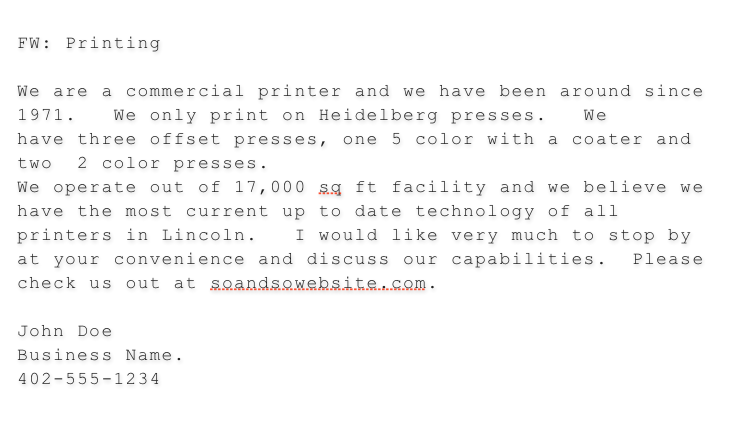
It was a legitimate company, Unfortunately the problem is that it was obviously copied and pasted, no information was personalized about me, there was no effort to learn more, in fact it even had “Forward” in the subject line. This person had missed the point. Unsolicited email is one thing but this person didn’t even take the time to put my name in the email. You have to continue to be real, not matter what technology you use. If you can’t do that you should at least give some incentive for me to give you the benefit of the doubt.
And with that, I’ll end this portion of the article. Next time I’ll speak a little about telling your story, and the benefits and dangers of blogging. Thanks again for reading and I hope you are enjoying the content.



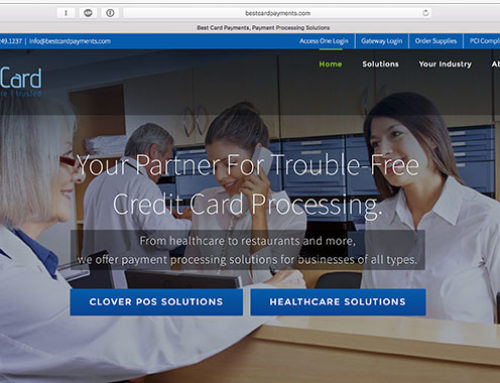
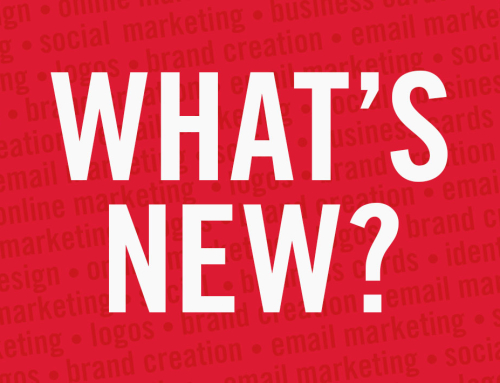
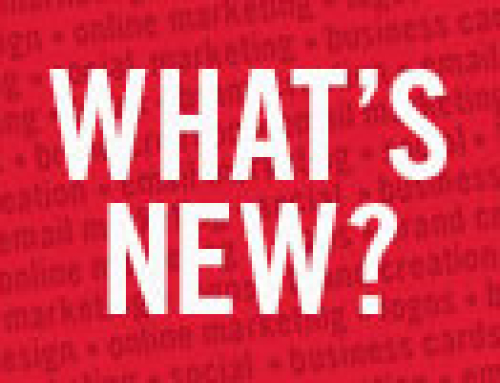
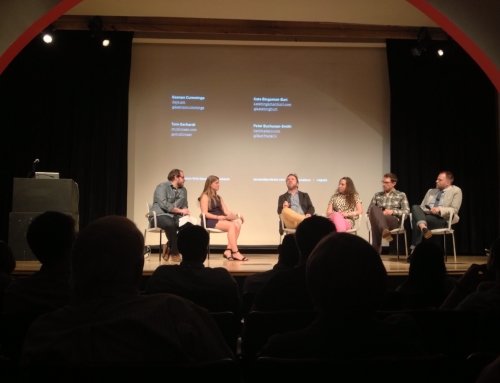
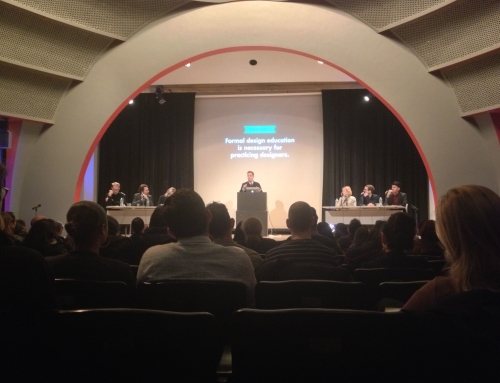
Leave A Comment
You must be logged in to post a comment.